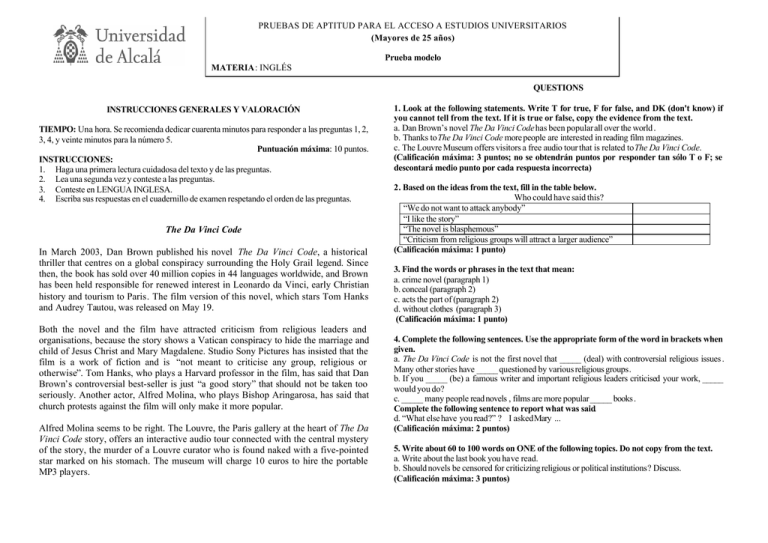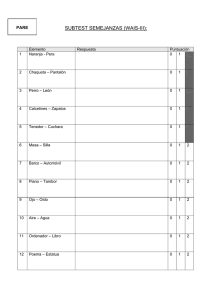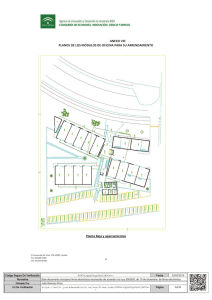The Da Vinci Code In March 2003, Dan Brown published his novel
Anuncio

PRUEBAS DE APTITUD PARA EL ACCESO A ESTUDIOS UNIVERSITARIOS (Mayores de 25 años) Prueba modelo MATERIA: INGLÉS QUESTIONS INSTRUCCIONES GENERALES Y VALORACIÓN TIEMPO: Una hora. Se recomienda dedicar cuarenta minutos para responder a las preguntas 1, 2, 3, 4, y veinte minutos para la número 5. Puntuación máxima: 10 puntos. INSTRUCCIONES: 1. Haga una primera lectura cuidadosa del texto y de las preguntas. 2. Lea una segunda vez y conteste a las preguntas. 3. Conteste en LENGUA INGLESA. 4. Escriba sus respuestas en el cuadernillo de examen respetando el orden de las preguntas. The Da Vinci Code In March 2003, Dan Brown published his novel The Da Vinci Code, a historical thriller that centres on a global conspiracy surrounding the Holy Grail legend. Since then, the book has sold over 40 million copies in 44 languages worldwide, and Brown has been held responsible for renewed interest in Leonardo da Vinci, early Christian history and tourism to Paris. The film version of this novel, which stars Tom Hanks and Audrey Tautou, was released on May 19. Both the novel and the film have attracted criticism from religious leaders and organisations, because the story shows a Vatican conspiracy to hide the marriage and child of Jesus Christ and Mary Magdalene. Studio Sony Pictures has insisted that the film is a work of fiction and is “not meant to criticise any group, religious or otherwise”. Tom Hanks, who plays a Harvard professor in the film, has said that Dan Brown’s controversial best-seller is just “a good story” that should not be taken too seriously. Another actor, Alfred Molina, who plays Bishop Aringarosa, has said that church protests against the film will only make it more popular. Alfred Molina seems to be right. The Louvre, the Paris gallery at the heart of The Da Vinci Code story, offers an interactive audio tour connected with the central mystery of the story, the murder of a Louvre curator who is found naked with a five-pointed star marked on his stomach. The museum will charge 10 euros to hire the portable MP3 players. 1. Look at the following statements. Write T for true, F for false, and DK (don't know) if you cannot tell from the text. If it is true or false, copy the evidence from the text. a. Dan Brown’s novel The Da Vinci Code has been popular all over the world . b. Thanks to The Da Vinci Code more people are interested in reading film magazines. c. The Louvre Museum offers visitors a free audio tour that is related to The Da Vinci Code. (Calificación máxima: 3 puntos; no se obtendrán puntos por responder tan sólo T o F; se descontará medio punto por cada respuesta incorrecta) 2. Based on the ideas from the text, fill in the table below. Who could have said this? “We do not want to attack anybody” “I like the story” “The novel is blasphemous” “Criticism from religious groups will attract a larger audience” (Calificación máxima: 1 punto) 3. Find the words or phrases in the text that mean: a. crime novel (paragraph 1) b. conceal (paragraph 2) c. acts the part of (paragraph 2) d. without clothes (paragraph 3) (Calificación máxima: 1 punto) 4. Complete the following sentences. Use the appropriate form of the word in brackets when given. a. The Da Vinci Code is not the first novel that _____ (deal) with controversial religious issues . Many other stories have _____ questioned by various religious groups. b. If you _____ (be) a famous writer and important religious leaders criticised your work, _____ would you do? c. _____ many people read novels , films are more popular _____ books . Complete the following sentence to report what was said. d. “What else have you read?” ? I asked Mary ... (Calificación máxima: 2 puntos) 5. Write about 60 to 100 words on ONE of the following topics. Do not copy from the text. a. Write about the last book you have read. b. Should novels be censored for criticizing religious or political institutions? Discuss. (Calificación máxima: 3 puntos) INGLÉS (Mayores de 25 años) ORIENTACIONES PARA LA CORRECCIÓN DE LA PRUEBA Título del texto: “The Da Vinci Code” La puntuación máxima de la prueba es de 10 puntos, repartidos del siguiente modo: Pregunta 1. PUNTUACIÓN MÁXIMA: 3 PUNTOS. En esta pregunta se mide la capacidad de comprensión. Hay que pronunciarse sobre la veracidad, la falsedad o la ausencia de información en el texto en relación con tres enunciados. En el caso de que sea verdadero o falso, se ha de justificar la opción mediante la cita del texto que se crea es la más pertinente. Cada una de las tres contestaciones será valorada con 1 punto. Se calificará con 0 puntos la contestación que, siendo verdadera o falsa, no vaya debidamente justificada con la cita apropiada del texto. También se considerará incorrecta la contestación en la que exista una contradicción entre la cita elegida y la veracidad o falsedad del enunciado. Asimismo, se descontará medio punto por cada respuesta incorrecta. Respuestas: a. TRUE: “…the book has sold over 40 million copies in 44 languages worldwide …” b. DK c. FALSE: “The museum will charge 10 euros to hire the portable MP3 players.” Pregunta 2. PUNTUACIÓN MÁXIMA: 1 PUNTO. En esta pregunta ha de medirse también la capacidad de comprensión. Esta pregunta consta de cuatro apartados y cada uno de ellos se valorará con 0,25 puntos. “We do not want to attack anybody” “I like the story” “The novel is blasphemous” “Criticism from religious groups will attract a larger audience” Studio Sony Pictures Tom Hanks religious leaders and organisations Alfred Molina Pregunta 3. PUNTUACIÓN MÁXIMA: 1 PUNTO. En esta pregunta se miden los conocimientos léxic os. Consta de cuatro apartados. Cada uno de ellos se valorará con un máximo de 0,25 puntos. Respuestas: a) thriller b) hide c) plays d) naked Pregunta 4. PUNTUACIÓN MÁXIMA: 2 PUNTOS. En esta pregunta se medirá el conocimiento de estructuras sintácticas y se evaluará la corrección gramatical. En cada uno de los cuatro apartados de que consta esta pregunta aparecerá una oración (oraciones) que habrá de ser completada o transformada. Los apartados a), b) y c) se valorarán con un máximo de 0,5 puntos, dividiéndose esta puntuación en partes iguales para cada uno de los “huecos”. El apartado d) se valorará unitariamente con 0,5 puntos. Respuestas posibles: a) deals ------- been b) were -------what c) Although / Though ------ than d) I asked Mary what else she had read. Pregunta 5. PUNTUACIÓN MÁXIMA: 3 PUNTOS. Esta pregunta es abierta y permite la posibilidad de expresar opiniones con un lenguaje propio sobre un tema determinado relacionado con el contenido del texto. Se evaluará a partes iguales la organización y el desarrollo del contenido (hasta 1,5 puntos) y la corrección gramatical y riqueza léxica (hasta 1,5 puntos), siempre que la redacción se ajuste al tema. En caso contrario la puntuación será de 0 puntos. Aunque el límite de extensión de la contestación de esta pregunta se pone en 100 palabras, sin embargo, si alguien sobrepasase este número NO será penalizado NI tampoco beneficiado por ello.




